|
|
|
| Tallinn | |
|
|
|
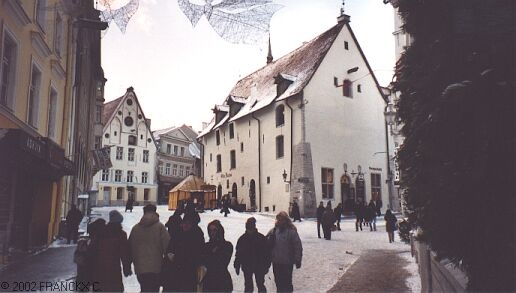 Medieval Capital In 1219 the Danes, led by King Waldemar II, conquered Northern Estonia and founded their own stone fortress at the spot where Lindanis had stood. A populated city developed at the foot of Toompea. The Dome Church was built as a symbol of Christianity during this period. During the Danish period (1219-1346), a street network developed within the city walls that has remained to the present day. A town hall, guild houses, churches and convents, storehouses and defensive structures were built. Residential buildings were mostly made of wood. The magistrate based city organization on the Lübeck city rights from 1248 at the latest. |
|
 The 20th Century On February 24, 1918, the Estonian Salvation Committee declared the independent democratic Republic of Estonia, which was neutral in the ongoing war between Russia and Germany. On the very next day, the city was taken over by German kaiser forces who did not recognize Estonian independence. After the November Revolution in Germany, the occupying forces departed and the temporary Estonian government took power. The people's power immediately had to organize a defense against an attacking Russian Bolshevik army, and the Estonian War for Independence began. The War for Independence finished with the Tartu Peace Treaty, signed in Tartu on February 2, 1920. Russia gave up all rights to sovereignty over Estonia with the peace treaty. Tallinn became the capital of the Republic of Estonia. Independence gave such a strong thrust to the development of the city that the architectural additions of the 1920s and 1930s, particularly in residential buildings, remain among the best of the city's buildings. However, peaceful development lasted but twenty years. The Molotov-Ribbentrop Pact, signed in 1939, allowed the Red Army to establish navy bases in Tallinn. By this time, the city's population was 179,000. About 15,000 Baltic Germans were relocated back to Germany from Tallinn and the rest of Estonia. In June, 1940, Soviet troops occupied Estonia, abolishing independence and establishing a Soviet order. The German occupation began on August 28, 1941. A Soviet bomb attack on March 9, 1944, killed or wounded over 1100 people. 11% of the Old Town was shattered, 50% of the city's residential areas were destroyed, and 20,000 people lost their homes. The German fascist occupation was replaced by Soviet occupation in September, 1944. 127,000 people remained in the city. Estonia was occupied by the Soviet Union from 1944 to 1991. Under the pretense of rebuilding Tallinn and developing industry, massive immigration from Russia and other Soviet republics raised the population to 500,000, and brought the percentage of Estonians down to 48.5%. Soviet architecture includes new residential areas with standard high-rise buildings such as Mustamäe, Õismäe and Lasnamäe and heavy, gray industrial areas and army bases. General repairs and clean-up took place in the late 1970s because the sailing regatta of the Moscow Olympic Games took place in Tallinn in 1980. The Singing Revolution began in 1988, primarily at the initiative of creative unions and the Estonian Heritage Society. On August 20, 1991, the Estonian Supreme Soviet declared the reestablishment of Estonian independence, on the basis of legal continuity, in Toompea Palace. In August 1994, the last Russian army troops left Tallinn. With this, World War II finally came to a close for Estonia. One aspect of the legacy left by the Soviet occupation in Estonia was the radical changes undergone in the demographics of the population. The majority of Soviet army pensioners preferred to stay in Estonia after the reestablishment of independence. |
|
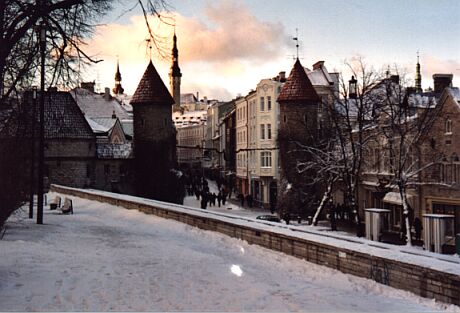 Wining and Dining Nearly all of the world's best-known cuisines are represented in Tallinn's restaurants, from Italian to Mexican and Japanese. A unique medieval restaurant is located within the Old Town. Tallinn at night has something for all insomniacs. Many different kinds of amusement will fall in the path of anyone wandering through the Old Town, where dozens of bars and pubs have live rock and folk music playing. The majority of nightclubs and casinos can be found in the city centre. In the white nights of summer, outdoor cafés, open into the late evening hours, and open-air performances bring even more life into the city night. |
|
 An active holiday Tallinn has plenty of health centres, tennis courts, squash courts and swimming pools. In the immediate surroundings of the city, one can go horseback riding and rent mountain bikes, and Niitvälja golf course is located at a half-hour's drive from the city centre. The seaside district of Pirita offers many relaxation and sports opportunities. Three public beaches with clean seawater and sandy shores are located in Tallinn. In the surrounding areas, however, there are many more, and most Tallinners do not consider a twenty-minute drive to be too much for getting to the beautiful nature outside the city. Popular sports events that have become traditional include the Ülemiste Lake Run, Tallinn Marathon, and the women`s May Run. Sports fans can spectate and cheer at international sports events such as the traditional Kalev motor race, "Tallinn Sword" competition of one stage of the World Cup in fencing, and the Erki Nool Reval Cup men's septathlon, in which top sportsmen from all over the world participate. Nearly a quarter of Tallinn's area is covered of greenery, one half of which is forest. The majority of parks are in the city centre, in the bastion zone surrounding the Old Town and in Kadrioru. Kadrioru Park, built in the early 18th century by Peter I and extended to the sea in the first half of the 20th century, is a favourite place for Tallinners to spend their free time and organize cultural events. Places such as the green areas bordering the Old Town, Nõmme residential district, Pirita together with the Tallinn Botanical Gardens, containing nearly 7,500 plant species and genera, and many other naturally beautiful spots are ideally suited for taking walks. Other enjoyable areas for walking include Tallinn Zoo in Veskimetsa, which has about 300 different species represented by around 3,000 individual animals and birds and the Estonian National Open-Air Museum in Rocca-al-Mare. |
|
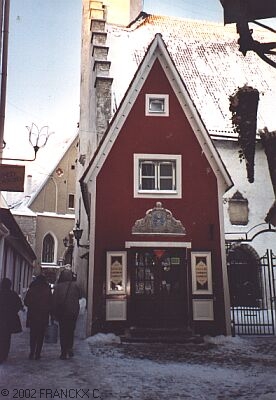 |
|
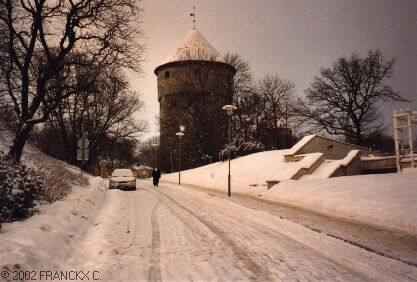 Tourism In 1999, 3.18 million foreigners visited Estonia, and 73% of them stayed in Tallinn. The number of overnight stays increased by 17%, compared to 1998. Tallinn is an attractive travel destination thanks to its rich cultural heritage, medieval Old Town, innumerable diverse cultural events and bargain shopping opportunities. Tallinn's growing popularity as a historically valuable city has also brought about an increase in cruise ships docking here, which once mainly visited only Helsinki and St. Petersburg. The majority of tourists come to Tallinn by sea. Passenger traffic in Tallinn's harbour has grown from a quarter million to six million people in under a decade. The convenient location of both the airport and the passenger harbour within easy reach of the city centre, the quality of service, conference facilities and top-notch accommodation choices have raised Tallinn`s popularity as a city of conference tourism. The majority of cultural establishments, entertainment spots, hotels and conference centres are located within 1 km of city centre. |
|
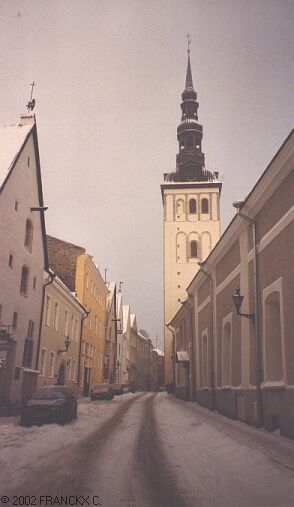
Tallinners Tallinn is home to about 410,000 people, amounting to 28% of the Estonian population and 32% of those of working age. There are almost 70,000 fewer people living in the city than ten years ago. The causes for this change are a negative natural birth rate and the high level of emigration in the years following the reestablishment of the Republic of Estonia. Nine out of ten Tallinners live in apartments and a tenth live in private houses. This situation is a result of the massive construction of large apartment building complexes during the Soviet era. However, in recent years, nearly half of all residential construction has been in building smaller homes. Home loans are becoming more accessible and new residential sections are developing on the outskirts of Tallinn. The state is supporting construction of these areas with its loan scheme for "young families." Salaries in Tallinn are nearly 25% larger than the Estonian average. Seven out of ten Tallinners work in the private sector and 14% work in businesses with foreign shares |
|